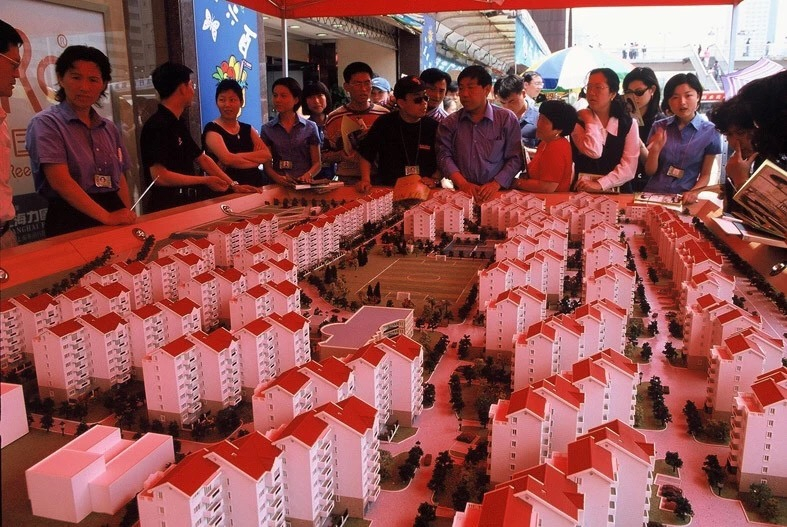
Arts
21:24, 06-Nov-2018
China through the lens of Japanese photographer Koichi Saito
Updated
21:02, 09-Nov-2018
By Shen Li
03:00

A photo exhibition showing the changes in China over 50 years has kicked off at the Beijing World Art Museum in Beijing. Organized by Photo Beijing, the exhibition features rarely seen photographs taken by Japanese photographer Koichi Saito.
These precious images captured the lives of ordinary people as the country underwent huge changes during the past 50 years.
The photographer, Koichi Saito, arrived in China in 1965 as a part of a 16-member Japanese delegation invited by China's then Premier Zhou Enlai.

A member of the Shanghai Peking Opera Troupe coaches his pupil at home in Shanghai, 1976. /Photo courtesy of Koichi Saito
A member of the Shanghai Peking Opera Troupe coaches his pupil at home in Shanghai, 1976. /Photo courtesy of Koichi Saito
Saito, who specializes in portraits, took more than 3,000 photos on his trip to China using around 80 rolls of film.
"I was very lucky to witness great changes happening in China, and document them with my own camera. I focused on ordinary people, and I think it was through the trivial things from ordinary people's lives that the bigger pictures were made up. These social and economic changes helped to shape the China today," he said.

Soldiers wait in line at a photo booth at Tiananmen Square in Beijing, 1978. /Photo courtesy of Koichi Saito
Soldiers wait in line at a photo booth at Tiananmen Square in Beijing, 1978. /Photo courtesy of Koichi Saito
Saito revisited China over 80 times in the past 40 years, leaving his footprints all over the country, even in the remote area of the Xinjiang Uygur Autonomous Region.
Wherever he went, he said he enjoyed the freedom of using his camera and documenting the daily scenes.

A photo taken between 1999 and 2001 shows that residents in Shanghai gather for a property opening. /Photo courtesy of Koichi Saito
A photo taken between 1999 and 2001 shows that residents in Shanghai gather for a property opening. /Photo courtesy of Koichi Saito
Saito told CGTN, "I just follow their daily lives. I would do a little research beforehand. When I take the pictures, I just put aside all conceived perspectives, just let things flow, and try to capture it as it is."
"For this exhibition to come into being, my Chinese friend Qin Feng has been really helpful. I just sent him the negative films and he selected the most representative ones and added descriptions, and it required a lot of energy and patience and he has done a remarkable job."

Three young men go to work at Sanyuanqiao, Beijing, 1996. /Photo courtesy of Koichi Saito
Three young men go to work at Sanyuanqiao, Beijing, 1996. /Photo courtesy of Koichi Saito
Qin Feng, who helped curate the exhibition, says Mr. Saito's photos preserved the most original side of China because they not only showcased people's looks and lifestyles, but also captured the appearance of city streets and a feeling of the social ambiance.
"There've been a lot of exhibitions showing changes since the reform and opening-up policy, but this one is special. It's natural and sincere. Usually, when a foreign photographer tries to capture China especially during the '60s and '70s, they seek novelty and focus only on the strange scenes. But Saito was not like that. For instance, this photo behind me captures people in Shanghai gathering for a property opening, and that was when real estate really started to boom in the early 1990s. It might not be a common choice for photographers as it has little artistic value, but housing is related to everybody's life," he said.

Little girls dressed in traditional Miao costume, Guiyang, Guizhou province, 1998. /Photo courtesy of Koichi Saito
Little girls dressed in traditional Miao costume, Guiyang, Guizhou province, 1998. /Photo courtesy of Koichi Saito
A selection of Saito's photos has also been published in China, preserving these invaluable cultural assets for the Chinese people.
The exhibition runs at Beijing World Art Museum until November 18.
(Top Photo: Japanese photographer Koichi Saito stands in front of his works in Beijing, November 4, 2018. /VCG Photo)

SITEMAP
Copyright © 2018 CGTN. Beijing ICP prepared NO.16065310-3
Copyright © 2018 CGTN. Beijing ICP prepared NO.16065310-3